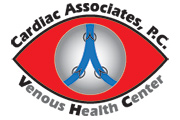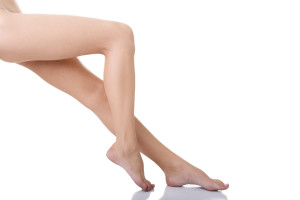
Specialists from a Top Vein Center in Montgomery County Answer the Question, “What Increases My Risk For Varicose Veins?”

Varicose veins aren’t communicable like colds, and they don’t develop as a direct result of doing something or not doing something else. Instead, when we talk about the things that increase your possibility of developing varicose veins, we have to talk about risk factors. All of the risk factors we are going to discuss in this article increase your likelihood of getting varicose veins. Some of them you can’t do anything about to lower your risk, and others you can.
The risk factors you can’t do anything to change
Although some people get varicose veins in their 20s or 30s, most develop them later in life, so your age is one of the most important risk factors. While only 1 in 20 women under 24 have varicose veins, over 50% of women over 65 have them. Another important risk factor is your gender, because for hormonal reasons more women develop varicose veins than men. This is even truer if you have become pregnant and given birth, or if you are taking birth control pills or are undergoing hormone replacement therapy.
Finally, the third major risk factor that you’re stuck with and can’t do anything to influence one way or another is your genetics. Vein disease is hereditary, so if your parents, siblings, and grandparents had varicose veins, you have a much higher risk of developing them yourself. To a lesser extent, some diseases – such as diabetes, inflammatory vasculitis, atherosclerosis, and metabolic syndrome – increase your risk of developing varicose veins as well.
What are the risk factors that Washington DC residents can reduce?
According to Washington DC vein specialists, the varicose vein risk factor that you can do the most to eliminate – and quickly – is smoking. Smoking cigarettes is not only bad for your lungs and for your heart, it’s terrible for your veins. Quitting smoking can cut your overall varicose vein risk in half. And because varicose veins are partly caused by pressure inside your veins, and because every extra pound you carry around increases that pressure, the next most important risk factor you can lower is being overweight, or obese. Losing weight significantly lowers your risk of developing chronic venous insufficiency, the condition that causes varicose veins.
Losing weight can also help you reduce one of the other most significant risk factors – not only for varicose veins but for dozens of other diseases as well – inactivity. And by inactivity we don’t just mean “not getting enough aerobic exercise,” although that is very important. Just as dangerous when it comes to varicose vein risk is sitting too much. If you have a job that requires you to sit at a desk all day or while traveling, finding ways to take “walking breaks” or “stretching breaks” throughout the day can significantly lower your overall risk.
If you have many of the risk factors we’ve listed, does that mean that you will need to visit a top vein center in Montgomery County?
Not necessarily. Having a large number of relevant risk factors makes you more likely to develop varicose veins than someone who doesn’t, but it doesn’t mean that you “have to” develop them. Lifestyle changes such as smoking cessation, weight loss, and increased exercise can greatly reduce your risk, and even have a balancing effect on some of the risk factors in the first group, such as your age and genetic history.
Your Washington DC varicose vein doctor can also help you with diet, exercise, and lifestyle recommendations that can help to keep you healthy. For example, if your job requires you to sit or stand for long periods of time, you can reduce your risk by wearing compression stockings, or by spending some time each day with your legs elevated to improve circulation. So if you are interested in learning ways to reduce your risk of developing varicose veins, our advice is to seek vein disease treatment in Washington DC, and to seek it sooner rather than later. The earlier you start to eliminate risks, the more likely you are to remain healthy.


